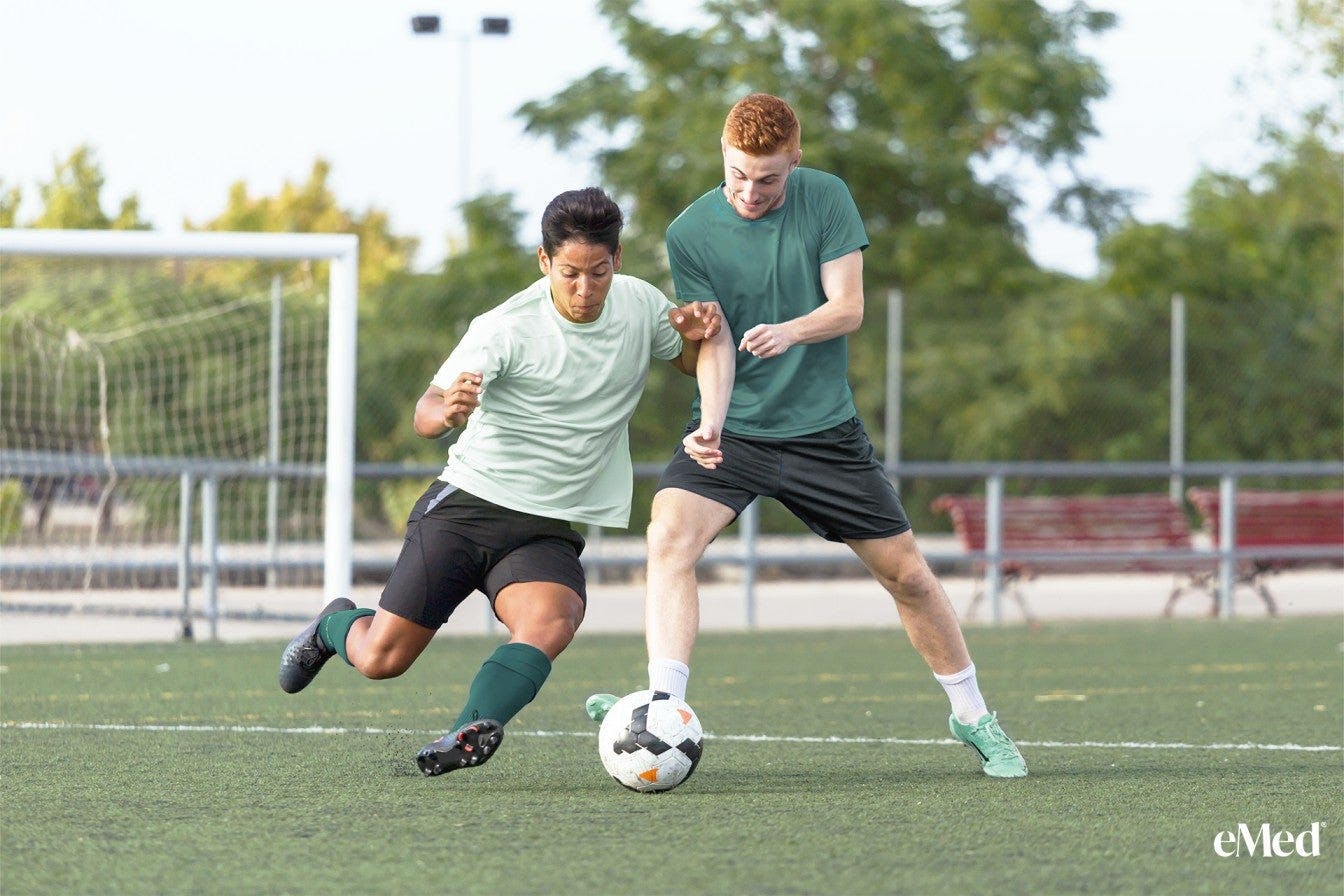Participating in sports and physical activities is integral for the development and well-being of children and adolescents. However, this active lifestyle can sometimes lead to growth-related conditions and injuries, particularly during the adolescent years. The peak age for injury presentation typically occurs at 13 years old (Burt et al., 2001), coinciding with a phase where significant growth is commonly observed. Understanding these challenges and implementing appropriate management strategies is essential to support young athletes.
Factors Contributing to High Injury Rates:
Several factors contribute to the high injury rates among teenagers:
- Participating in multiple sports or one single sport repeated through the week.
- Spikes in training volume after periods of inactivity.
- Previous injuries that may not have fully recovered.
- Inexperience or newness to a sport.
- Pressure to train for competitions or races.
- Growth spurts leading to vulnerabilities in certain areas.
- Poor core control and coordination, especially after a period of growth
- Loss of flexibility in joints and muscles post-growth spurts.
Heel Pain in Teenagers
One common condition that often occurs during rapid growth periods is Severs disease. This is inflammation where the Achilles tendon attaches to the heel bone, known as apophysitis. It is triggered or made worse by overloading or a spike in training. It typically occurs in children between the ages of 8 and 14, before or during growth spurts.
Symptoms:
- Heel pain, at the back or bottom of the heel, tender to touch.
- Limping or walking on tiptoes to avoid pressure on the affected heel
- Discomfort during physical activities or squeezing the sides of the heel bone
- Better with rest if mild or moderate symptoms.
- Recent or current growth spurt
Treatment and Management:
Treatment focuses on education, reducing the load by looking at activity and sports, avoiding spikes in workload, and ensuring adequate rest and recovery.
- Rest: Reducing, modifying or avoiding activities that exacerbate pain is crucial to allow the heel to heal. Adding extra rest days often helps.
- Education: getting advice and how best to manage the symptoms for your teenager is important, especially if they are active and sporty.
- Ice: Apply cold compresses to alleviate pain and inflammation.
- Exercises: Focus on movement and stability exercises. Avoid excessive stretching when the area is acute s this can aggravate the area where the tendon attaches.
- Footwear: Wear supportive shoes with cushioning. Sometimes a heel cup or shoe insert can help add extra cushioning and support.
- Physiotherapy: Seek professional advice for tailored advice and management and appropriate exercises.
- Pain Relief: Advice on taking over the counter painkillers to help with pain can be sought from your local pharmacist, alongside the rest and advice above, but it’s important to do this alongside resting and seeking advice.
When to Seek More Urgent Help:
While Severs symptoms typically respond well to advice and a period of reduced load and activity, certain signs may indicate the need for further evaluation by a healthcare professional. These include severe or worsening pain despite a period of rest, night pain, inability to bear weight on the affected leg, , and signs of infection such as redness, warmth, or fever. Any of these symptoms require urgent medical attention to rule out more serious conditions.
eMed Physiotherapy:
eMed physiotherapy provides a convenient way to access physiotherapy services remotely, enabling both adults and children to receive personalised care from the comfort of their own homes. By using digital consultations eMed physiotherapy supports ongoing care and encourages active engagement in rehabilitation with accessible online exercise programmes. This approach guarantees timely assistance and expert guidance in effectively managing symptoms.
Conclusion:
Growth-related conditions like Sever's disease are common among young athletes. Proper management strategies, including rest, education, appropriate footwear, and targeted exercises, are crucial for recovery and prevention of further injury. It's imperative for parents, coaches, and athletes to prioritise rest and seek professional advice when needed to ensure long-term athletic well-being.
References:
- Burt, C., et al. (2001). Injury patterns in adolescent sport. Journal of Adolescent Health, 28(4), 277-280.
- Micheli, L. J., & Purcell, L. (2010). Foot and ankle problems in the young athlete. Orthopaedic Nursing, 29(2), 102-108.
- Paton, B., et al. (2017). The child and adolescent athlete: a review of three potentially serious injuries. Journal of Orthopaedic Surgery and Research, 12(1), 1-9.
- Stracciolini, A., & Micheli, L. J. (2010). Orthopaedic knowledge update: Pediatrics 4. Journal of Bone and Joint Surgery, 92(15), 2478-2489.
- Elengard, T., et al. (2011). Risk of injury in elite adolescent Alpine skiers: An epidemiological 1-year study. Knee Surgery, Sports Traumatology, Arthroscopy, 19(1), 33-39.



